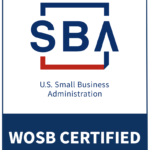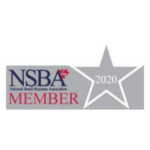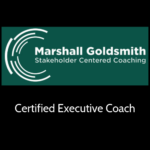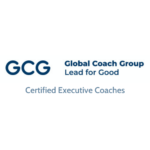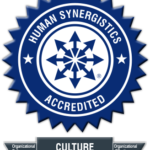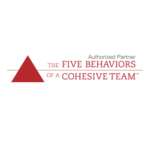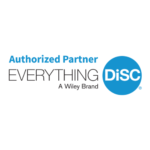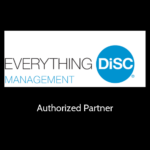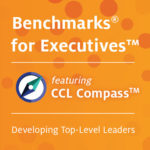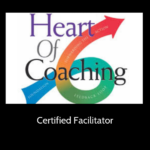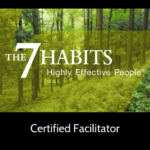Executive Presence – An Essential Competency
All leaders are capable of executive presence. Some have varying levels of it. Not all are consistently effective at it.
Beyond vision and strategy, both key competencies for executives, there are various other key functional areas of tactical experience and technical knowledge of industry, business, and operational systems and processes individual’s must have to be an extraordinary, effective, and successful executive. These functional areas include strategy, investor relations, leadership, culture, talent management, finance, corporate governance, risk management, operational efficiency, customer service, brand reputation, innovation, technology, stakeholder management, mergers and acquisitions, continuity, succession, and sustainability, to name a few. One critical behavioral competency that overlays these functional and technical skills and competency is Executive Presence (EP).
Executive Presence combines a strong sense of self-awareness and situational awareness complimented, over time, by learned and applied leadership competencies. The ability to deeply understand ourselves, clearly, so that we are better able to productively respond to the many different types of situations without reacting, to understand and manage perception, and fostering resilience, are a few foundational capabilities to being an effective executive leader.
Where leaders often derail and are ineffective is when they get tangled into the dramas and emotions, neglect to align and uphold expected culture and values, and reactively engage in unnecessary and negative activity that produces negative consequences, such as: disengagement, low morale, dysfunctional workplace culture, avoidance, opposition, internal competitiveness, perfectionism, not achieving goals, tardiness, blaming, miscommunications, and failure to achieve collective results. The impacts are both internal and external, happen and spread quickly, and take time to recover from.
Executive Presence begins with understanding and learning about the common pitfalls executive leaders often experience in the workplace. Once able to identify these detrimental behaviors, whether in their own behavior or that of their team member, executives can open themselves to becoming responsive to the varying situations, coach and fostering learning and growth, trust, empowerment, collaboration, and optimization of talent.
18 Common Pitfalls of Executive Presence
- Habit of showmanship, constantly seeking attention and likability
- Lack of cognitive-awareness and integrity
- Lack of Communication Intelligence™ (CQ)
- Lack of Emotional Intelligence (EQ)
- Lack of self-awareness
- Lack of, or inconsistent with, self-control, composure, and poise
- Indecisiveness and/or poor logic
- Engages in or encourages gossip
- Inflated egos (Victim, Villain, and/or Hero)
- Sense of entitlement, is insensitive and/or shallow
- Manipulation of people, situations, process, and systems
- Cuts corners, avoids dialogue and productive conflict, and/or complains
- Reactive, defensive, judgmental, resistant, threatening, blaming, and/or shaming
- Gets overwhelmed, catastrophizes, or suppresses emotions
- Rationalizes, diminishes, or justifies reasons
- Exhibits low self-worth or lack of confidence
- Inability to influence and motivate self and others
- Uses distractions and substances to acquire relief and self-soothing
A pitfall is a situation that is an unsuspected or hidden danger, risk, hazard, or condition. These situations are fueled by irresponsible and derailing, habitual behaviors that quickly permeate negative consequences throughout the workplace. Any pitfall can be consulted, evaluated, assessed, identified, addressed, developed, coached, and turned around. The improved behaviors offer numerous learning and growth outcomes resulting in individual and team reliability, stability, safety, dependability, respect, credibility, and positively impacting organizational sustainability and competitive advantage. It requires an intentional commitment and encouragement to 100% responsibility in and by leadership.
21 Characteristics of Effective Executive Presence
- Noble, humble, graceful, and composed
- Visionary, modeling and inspiring a shared vision
- Aligned and focused, manages energy to priorities
- Leads the business, others, and self with a sense of excellence
- Authentic, intentional, and resilient
- Committed to creating value, growth, and opportunity
- Instinctive and intuitive
- Scholarly and resourceful
- Conscious listener and communicator
- Responsible and encourages responsibility in others
- Respectful and encourages respect in others
- Credible and encourages credibility in others
- Trustworthy and builds trust with others
- Caring and compassionate
- Appreciative and grateful, assumes positive intent
- Courageous (Elephant in the room, utters truth, takes initiative, self-empowered)
- Candid: speaking unarguably – stating facts, feelings, emotions, thoughts, and physical sensitivity
- Extraordinary gravitas that models alignment to expected company/corporate values and culture
- Professional appearance is impressionable, cares about personal hygiene and appearance
- Disciplined, prepared, and organized
- Enables engagement and productivity by optimizing strengths, talents, skills, and competency
These lists are often overwhelming to individuals who are still in the process of developing executive presence or lack executive presence all together. For executives who have strong executive presence, these characteristics are chosen and intentionally acted on daily. They are an inside and personal effort that is nurtured and continuous in nature.
Executive presence is complex, develops and creates impact over time, and is reflected and demonstrated by you in all you think, feel, say, and do. It is a powerful source of energy that you exude to your followership. Becoming aware, learning, and developing executive presence competencies are key strategic efforts for leaders. Here are 10 strategies to get started:
10 Basic Strategies for Strengthening Your EP
- Commit and encourage the practice self-awareness and self-mastery
- Commit and encourage truth and candor
- Commit to, create, encourage, and uphold impeccable agreements
- Commit and encourage to uphold a culture of positive intention, curiosity, growth, and learning
- Commit encourage to being a conscious, responsive, and effective leader
- Commit and encourage to manage your energy and align to priorities
- Commit and encourage to end gossip and drama in the workplace
- Commit to catching others doing something good, thank them, and be specific on how it aligns to goals and company philosophy (Vision, Values, and Mission)
- Commit and encourage clarification of your leadership intentions and contributions
- Commit and encourage cultivation of professional executive and leadership development and coaching
Executive Presence, as described above, is a definite success factor that is competitively sought out by successful corporations and businesses around the world. Executive presence can be coached and developed, and most importantly, it takes commitment, courage, humility, and discipline by the leader to change, grow, and learn. So, whether it is a first impression or continuous influence you are seeking, executive presence is a requirement of leadership – it IS essential to any leaders’ personal brand, effectiveness, and ability to Maximize Excellence!
~~~~~~~~~~~~~~~~~~~~~~~~~~~~~~~~~~~~~~~~~~~~~~~~~~~~~~~~~~~~~~~~~~~~~~~~~~~~~~~~~
About the Author: Lori Harris is Co-Founder/Co-Owner and Managing Partner of Harris Whitesell Consulting. She is an experienced Talent Management Executive providing world-class service in Organizational & Culture Effectiveness| Talent Optimization| Organizational, Executive, Leadership & Team Development & Coaching | People Data Expert | Author, Speaker, and Thought Leader.
Harris Whitesell Consulting, LLC., is a human resources and talent management consulting firm headquartered in Wilmington, North Carolina. Our mission is to create valued partnerships based on trust, excellence, and impact – from assessment to action. We offer assessment, coaching, development, culture and engagement, change and transition, talent optimization, and customer strategy solutions. Our team of certified and highly qualified experts maximize organizational and leadership effectiveness and business success by working with people and businesses to accelerate value, optimize growth and opportunities for their leaders, teams, and organizational success! We maximize excellence!
Learn more about our services – visit our website, email us at info@harriswhitesellconsulting.com, call us at +1 (910) 409-0202, and…connect, follow and reach out to us on LinkedIn.


